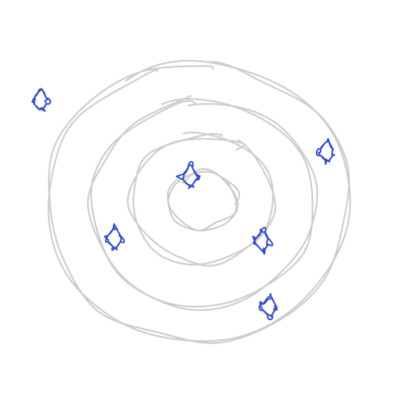Mindsets applied:
Accordance Dialogues
Accordance Dialogues are used to develop proposals that benefit from:
- group accordance, consensus, or near-consensus
- attention to reveal unforeseen issues and offer improvements
Accordance Dialogues are designed to work in async communication (on a forum) or in a group call (sync). For big issues requiring consideration, they’re usually used async first, and fall back to group calls if needed. They’re also useful for group calls, when a facilitator wants to move the group towards tangible action.
Process
Accordance Dialogues are action-oriented. The discussion is always focused on a specific proposal, and if issues are raised, they are about specific cases. If a participant dissents, they’re expected to do it constructively, also looking for a practical way forward.
- Proposal - The Proposer expresses the needs their proposal addresses (Why) & their specific proposal (What & How)
- Vibe Check - Others immediately indicate their level of support with
- 👍 in favour of the proposal
- 👋 neutral, supporting the decision of the group
- 👎 reject the proposal, or want to raise a significant flaw for discussion
- Discussion - Circulate through everyone who 👎 who says why this affects them specifically, and what they need to be onboard. After all have spoken, The group might ask questions to better understand the concerns.
- Follow-on proposal - Someone must suggest another (modified in part or whole) proposal that attempts to the raised concerns and the Proposer’s needs. (If nobody volunteers, then one of the people who voted thumbs down attempts one.)
- Repeat - Steps 1-5 are repeated to explore paths towards consensus. The idea is to make follow-on proposals quickly, to reveal critical concerns and iteratively improve on previous proposals with that input.
- Conclusion - The original Proposer may choose to withdraw their proposal, or to proceed as a Benevolent Dictator, taking on-board the concerns they’ve heard.
The Accordance Dialogue always ends with the Proposer restating their final proposal (or withdrawal.)
Tips
If consensus is proving difficult, facilitate the responses to:
- Speak about their own needs, and not needs of others or a general group. This keeps things practical and more solvable.
- Speak about current needs, and not past of future needs. This avoids solving problems that don’t really exist.
- Explain needs in context. Very often needs will appear to be opposing (we need it faster, but they need it cheaper) but in reality both can be served in their limited context (We can do it faster in that case because they don’t need it to be painted.) See Evaporating Cloud.
Keep in mind that full consensus may not be possible. Accordance Dialogues still highlight the key points of contention, which builds empathy and understanding across the group. Often that is satisfactory to proceed.
Once people feel heard and understood, they are more likely to support the group decision and the group is more likely to be concious of their needs. This is a way to avoid Tacit Disagreements





